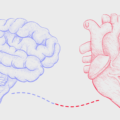Psychosomatic disease (psyche: the mind, soma: the body). Illness is defined as “of, or relating to, the interaction of mind and body”. It is generally believed to be caused or aggravated by a mental factor such as internal conflict or stress. Synonyms are “psychological, irrational, stress-related, stress-induced, subjective, subconscious, unconscious”. There are two words in the synonyms that I disagree with because they give rise to false impressions. The first one is “psychological”, because this is often interpreted as “being invented by the patient”. The second word is “irrational”, because “it is thought by most physicians that there is no reason for the development of symptoms”. There is, however, one word that I do agree with and that is “subconscious”.
Understanding Stress and Stressors
The word “stress” is commonly used improperly and must be defined in order to understand what we mean. In the dictionary it is referred to as “a force demanding energy”. That means that everything, including human beings, is under stress from the surrounding environment. The ultimate long-term effect is rust, (metal oxide) and decay for animals like us. Essential to life, oxygen kills us in the end by causing the equivalent of rust.
The stress imposed on human beings is from changes in the environment to which we must adapt continuously throughout life. Why in fact do we sweat when it’s hot and shiver when it’s cold? Why do we get angry when we are insulted? The first two examples are responses to physical changes in the environment to which we have to adapt. Sweating produces fluid on the skin and its evaporation leads to cooling. Shivering is caused by muscular action and results in heat formation to compensate for its loss in a cold environment. We become angry from an insult because it produces an electrochemical reaction programmed in the brain to react that way. The insulting words signal the hearing mechanism that automatically sends a signal to the brain. Note that we do not usually smile and say thank you when we are insulted, although we can. It is therefore necessary to look at the construction of the human brain to try to clarify these issues.
Basic Construction of the Brain
All the higher members of the animal kingdom have exactly the same basic brain construction that has evolved from more primitive to less primitive by adding layers of greater sophistication. It can be thought of as existing in two basic sections, the lower primitive brain and the upper cognitive or thinking brain. In humans, Freud called the lower brain the id and the upper brain the ego. The lower brain does not think. It simply reacts automatically to incoming stimuli. This part of the brain is sometimes referred to as “reptilian”, because that is the kind of brain possessed by reptiles. The executive actions can be modified, or they can be suppressed, by the ego. The id is a bit like a computer, while the ego may be compared with the person operating the computer. It was this idea that gave rise to the philosophy expounded by Descartes. Now we have to consider how these two brains cooperate with each other to produce what might be called normal, healthy human function.
The Brain is a Machine
To suggest that the brain is a machine is very offensive to many people. Conventionally, they say that “there must be something more than whirling atoms and electrons to humans who have a soul as well as a body”. Unfortunately, whether we like it or not, the physical attributes of survival must dominate our thinking, in spite of our colossal ignorance. After all, we all know that we cannot survive without water and food; we die from disease and injury. This presentation therefore deals with the “now”, not the hereafter. When an infant is born, the only operative brain is the lower one, the id. This enables the infant to suck milk from the maternal breast, enables him to cry and control the urinary and bowel system, all automatic functions of survival. An automatic nervous system known as autonomic is controlled by this part of the brain, enabling signals to pass to the body and back from the body to the brain. As he grows, the upper brain gradually becomes “hardwired” as he proceeds from infancy to childhood, to adolescence and adult status. As the two parts of the brain become connected, what we call “free will” emerges. That is why the ego can be used voluntarily to suppress the reflex actions of the id. It is why we can voluntarily suppress bowel and bladder function in youth and fail to control it well in age. Oxidative decay affects brain cells in preference to most body cells, so mental changes usually occur first, as we age.
Chemistry and Electricity
All of this requires energy and it is derived entirely from the consumption of food. It is how this food is converted into energy that should dominate our attention in regards to the maintenance of health. The health of all body and brain cells is maintained by the efficient consumption of fuel in a process known as oxidation. The id that never sleeps is particularly vulnerable to loss of this efficiency and its actions become distorted in what might be an unexpected manner. Because the loss of oxidative efficiency represents a dangerous state, it activates the well-known fight-or-flight reflex, producing a state of anxiety or fear, palpitations of the heart, unusual sweating and acceleration of the rate of breathing. Remember, this is a primitive reflex that is hardwired into the brain, preparing us to fight an enemy or flee from danger. The body is being prepared for action. Because the ego does not perceive any environmental threat, or perhaps the nature of the threat, this reflex is activated for no observable reason. It is obviously disturbing and causes the sufferer to seek medical advice.
The patient describes the symptoms to the physician, who carries out a physical examination and does a series of laboratory tests, all of which are perfectly normal. The patient is told that these are “panic attacks” and he may be given a “tranquilizer” to calm his nerves. The possibility of oxidative dysfunction is rarely if ever considered. This is a typical example of psychosomatic disease, but the distortions in the mechanism may give rise to an assortment of unpredictable physical or mental symptoms other than panic attacks. It is precisely because of the multiple disconnected symptoms, without laboratory evidence of pathology, that suggests the term psychosomatic. Even more importantly, the emphasis may be placed on the word “fight”, so let us see how this might have practical application. Readers on this website may be aware of a number of posts describing the loss of oxidative efficiency in brain, caused by an excess of dietary sugar inducing vitamin B1 deficiency, and the variable symptoms associated with it. The example below illustrates how the brain, and subsequently mood and behavior, are affected by the loss of oxidative efficiency.
A Path to Violence
A fictitious 12 year old boy indulges in the common American habit of consuming empty calories in the form of sweets, chocolate, candy, assorted carbonated, and even caffeinated, beverages and perhaps alcohol. He is hyperactive, inattentive in class, often rude but is otherwise considered to be in normal health. One day he is punished by his teacher in a perfectly appropriate manner. Because he does not have any conscious awareness of the distortions in his id, he believes the punishment to be unjust. He sees himself being put upon by the establishment and nurses his grievance in a state of chronic anger. Perhaps it grows and begins to dominate his hatred against the world, finally exploding in a form of violence that satisfies his hatred, his only motive. Note that he does not consciously understand why he hates the world, but to destroy some of it is indeed the motive.
If oxidative inefficiency activates the fight-or-flight reflex, it may be beyond the power of the ego to suppress it. Under these circumstances this boy may be perceived as being “more primitive” in his actions. The constant reiteration by the news media that “a motive for violent action is being sought” in conventional (voluntary) terms may be a useless exercise. To test this hypothesis, it would be so simple to make inquiries concerning the nutritional habits of the perpetrator. If and when such an individual survives the inevitable shoot out, it might be possible to assess whether his sick mind is related to such an easily definable cause. If this was shown to be true, it would be an example of an extremely dangerous form of psychosomatic disease.
Conclusion
In the minds of many physicians, psychosomatic disease is almost an accusation of malingering. It is sometimes referred to as “functional”, demanding little thought on behalf of the patient as to its underlying cause. They see it as a response to stress and imagine that if the patient can only “pull himself together”, the symptoms will disappear. This gave rise to the use of drugs called “tranquilizers”, prescribed almost exclusively for this extraordinarily common condition. The irony is that it is indeed related to “stress”, but it is the abnormal chemistry of the brain that produces the symptoms and the solution is simple. There is no doubt that physicians should be taking a good hard look at the dietary indiscretion that is causing “functional” illness in so many people in the United States. What may be even worse is that if these symptoms are not recognized for what they represent and dietary indiscretion persists, permanent damage may follow in later years to become “chronic brain disease”, with variable pseudonyms.
We Need Your Help
More people than ever are reading Hormones Matter, a testament to the need for independent voices in health and medicine. We are not funded and accept limited advertising. Unlike many health sites, we don’t force you to purchase a subscription. We believe health information should be open to all. If you read Hormones Matter, like it, please help support it. Contribute now.
Yes, I would like to support Hormones Matter.
Photo by Jose A.Thompson on Unsplash
This article was published originally on September 26, 2016.
















Oxidative stress leading to psychosomatic diagnoses are not just caused by diet. It’s also often by adverse effects to prescription medications.
Dear Dr. Lonsdale,
Today, I found your work. I am delighted. I am a psychologist. I work with many patients in chronic pain and chronic illness. I am particularly adept at picking up issues related to dysautonomia that many physicians miss. When my colleagues use the descriptors or diagnoses like psychosomatic or somatization, I cringe. I challenge them that these diagnoses are simply lazy thinking, potentially injuring and frequently have sexist implications.
When my patients present with anxiety and/or depression, I now send them off to their physicians with a request for a variety of nutritional assessments as well as full thyroid panels. But I face a problem, physician reliance on blood tests which may or may not
reveal what is going on.
I would love to read another blog on how patients can secure the nutritional assessments they need, particularly patients who don’t have the financial resources of those able to pay out of network fees of most functional/integrative physicians.